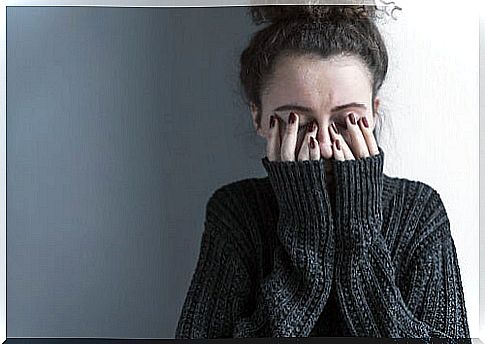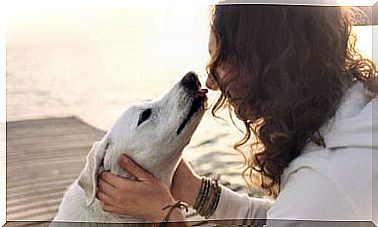Clark And Watson’s Tripartite Anxiety-depression Model

Anxiety and depression are two diagnostic categories that attempt to differentiate two different psychological disorders. On the one hand, anxiety is conceptualized as a tendency to apprehension, an alarm towards some future danger and a high physiological activation, among other issues that will depend more on the specific disorder. In turn, depression is characterized above all by a markedly low mood together with a series of symptoms that, in general, derive from it or concur with it: poor appetite, anhedonia, apathy, insomnia, etc.
Although it may seem to us that both concepts are exclusive, the truth is that in routine clinical practice we can easily verify that they tend to go together. Although the DSM-5 has not yet created a diagnostic category as such that brings together the symptoms of both, the ICD-10 does include as its own category the diagnosis of mixed anxiety-depressive disorder.
The diagnostic category that we have just defined is, according to the WHO, frequent in primary medicine, and even more so in the non-clinical population (people who do not demand therapeutic care).
In 1991, the authors Clark and Watson proposed a “tripartite anxiety-depression model.” As established, the model will be made up of three elements called: negative affect or distress, physiological hyperarousal and anhedonia or decrease in positive affect. Clark and Watson suggest that the presence of high levels of negative affect is a common indicator of anxiety and depressive disorders.

Subtypes of anxiety-depressive disorders according to the tripartite model
According to Clark and Watson, there are two subtypes of disorders within the anxiety-depression category. Patients whose predominant symptoms are non-specific (distress, irritability, loss of appetite, sleep disturbances, vague somatic complaints, etc.) and show moderate levels of both specific factors should be diagnosed as a mixed anxiety-moderate depression disorder. This would be a category similar to the one proposed by the ICD-10 that we have discussed previously.
On the other hand, when patients report very high levels, not only in negative affect, but also in anhedonia and psychophysiological hyperactivity, then they should be diagnosed as severe mixed anxiety-depression disorder.
Positive affect and negative affect:
Clark and Watson’s tripartite model is based on the concept of positive and negative affect. With the PANAS questionnaire, developed by the same research group, we can evaluate both dimensions. Positive affect would be anything contrary to sadness, anhedonia or apathy, for example. On the other hand, negative affect – common in both dimensions – would range from irritability to guilt or feelings of inferiority.
For the authors, anxiety and depression share many symptoms of emotional distress. But it is also true that other patients suffering from depressive symptoms do not manifest anxious symptoms and vice versa. The tripartite anxiety-depression model postulated by these authors indicates that what characterizes and differentiates depressive patients from patients with anxiety is precisely the low positive affect.
The Tripartite Anxiety-Depression Model
According to the tripartite model, on the one hand we would have the dimension of depression that would have a series of its own characteristics. These would be the following: In the first place, we would find low positive affect and hopelessness as the star points of the table. In addition to them, there would be symptoms such as sadness, anhedonia, apathy, suicidal tendencies, low sympathetic activation, loss of appetite, psychomotor inhibition, feelings of worthlessness and the perception of loss.
For its part, anxiety would include physiological hyperarousal and uncertainty as the main elements. Other symptoms proposed by the tripartite model for anxiety would be: fear, panic, nervousness, avoidance, instability, high sympathetic activation, muscle tension, hypervigilance, perception of threat / danger.

The model also includes a series of symptoms common to both pathologies. Negative affect, as we have noted, is at the fore in this case. But helplessness also plays an important role in the union of anxiety and depression. Other common symptoms that we find are: irritability, worry, low concentration, insomnia, fatigue, psychomotor agitation, crying, feelings of inferiority, guilt and low self-esteem.
The authors also note that high negative affect, while common to anxiety and depression, tends to be more characteristic of anxiety. Helplessness, although it is also a common component, is more typical of depression.
Conclusions on the tripartite model
The tripartite anxiety-depression model opens the door to transdiagnostic treatment. These types of treatments are gaining more and more relevance in clinical practice since they have been shown to be effective in treating several diagnoses at the same time or a main diagnosis with its comorbidities. In addition to being effective, they are more efficient both in time and financial resources.
From these transdiagnostic approaches, a focus would be made on the common nuclei that underlie both disorders. Following Clark and Watson’s tripartite anxiety-depression model, therapy should focus on negative affect and helplessness, above all.









